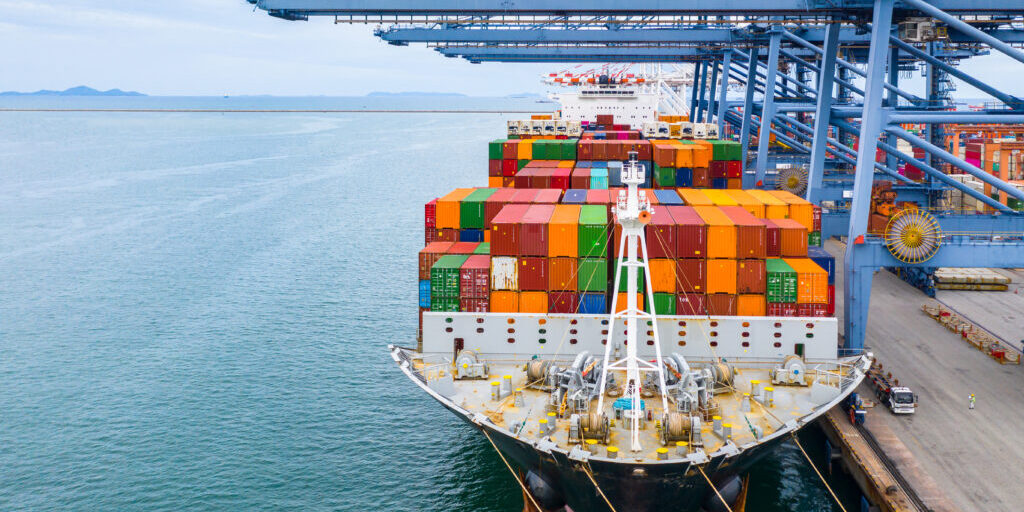Carbon Capture and Storage Shipping Solutions to Reduce Emissions

Carbon capture and storage (CCS) has emerged as a vital technology in combating climate change. By capturing CO2 emissions from significant point sources, such as power plants and industrial facilities, and securely storing them underground, CCS can substantially reduce greenhouse gas emissions. However, transporting CO2 to storage sites remains a significant challenge. One promising solution is to utilise shipping for CO2 transport, currently being explored by Norwegian shipping company Hunter Group and global quality assurance and risk management provider DNV.
CO2 Shipping: A Viable Option for CCS?
In February 2023, Hunter Group and DNV announced their partnership to explore solutions for the safe and efficient transport of CO2 by ship. The collaboration aims to develop a design for a vessel capable of carrying large quantities of liquid CO2 and create operational guidelines to ensure the safe handling of CO2 during transport. By developing CCS-specific shipping solutions, Hunter Group and DNV hope to contribute to the global effort to reduce greenhouse gas emissions and achieve a more sustainable future.
Transporting CO2 by ship is a potentially viable option for regions without existing pipeline infrastructure or where pipelines may be challenging to construct due to geographical constraints. Shipping provides flexibility, as vessels can be redirected to different storage sites based on demand and can be scaled up relatively easily to accommodate increasing volumes of captured CO2. However, there are several technical and regulatory challenges that need to be addressed to make CO2 shipping a reality.
The Challenges of CO2 Shipping for CCS
One of the primary technical challenges is the need to store CO2 in a liquid state during transport. This requires maintaining the CO2 at a temperature of -50°C and a pressure of 7-10 bar, which demands sophisticated cooling and pressurisation systems. The design and construction of vessels capable of handling such conditions will be a critical aspect of the Hunter Group and DNV partnership.
In addition to the technical challenges, regulatory hurdles must be overcome to ensure the safe and efficient transport of CO2 by ship. The International Maritime Organisation (IMO) has begun to develop guidelines for CO2 transportation, but further work is needed to establish a comprehensive regulatory framework that addresses issues such as ship design, operational procedures, and safety measures.
Hunter Group and DNV: Leading the Way in CO2 Shipping for CCS
The partnership between Hunter Group and DNV represents an essential step forward in addressing these challenges and unlocking the potential of CO2 shipping as a viable transport solution for CCS. By combining Hunter Group’s expertise in shipbuilding and operations with DNV’s experience in risk management, safety, and regulatory compliance, the collaboration is well-positioned to develop innovative solutions that can facilitate the large-scale implementation of CCS.
As the world seeks to achieve the goals set out in the Paris Agreement and limit global warming to well below 2°C above pre-industrial levels, CCS is expected to play a crucial role in reducing emissions from hard-to-abate sectors such as cement, steel, and power generation. By 2050, the International Energy Agency (IEA) estimates that CCS could capture and store up to 5.6 gigatonnes of CO2 per year, equivalent to 15% of current annual global CO2 emissions.
In this context, the development of CO2 shipping solutions by Hunter Group and DNV has the potential to make a significant contribution to global climate change mitigation efforts. As the CCS industry continues to grow, and the need for CO2 transport and storage solutions becomes increasingly urgent, the success of this partnership could pave the way for a more extensive network of CCS projects and contribute to a significant reduction in global CO2 emissions.
From Think Carbon’s perspective, the Hunter Group and DNV collaboration highlights the importance of innovative thinking and cross-industry cooperation in addressing the complex challenges posed by climate change. As more businesses and industries recognise the urgency of transitioning to a low-carbon economy, partnerships like these become essential in driving progress and developing the necessary solutions to achieve a more sustainable future.
Moreover, the widespread adoption of CCS technology has the potential to create new business opportunities and stimulate growth in related sectors, such as the development of CO2 capture technologies, transportation infrastructure, and CO2 utilisation for industrial applications. As a company focused on helping businesses reduce their carbon footprint, Think Carbon recognises the potential impact of successful CCS implementation more broadly across all supply chains.
To support the deployment of CCS and other low-carbon technologies, Think Carbon encourages businesses to utilise its predictive carbon calculator to assess their current emissions and identify opportunities for improvement. By fostering greater awareness of their environmental impact, businesses can make more informed decisions and contribute to a collective effort to reduce greenhouse gas emissions.
CCS and Cross-Industry Collaboration: Key to Combatting Climate Change
The partnership between Hunter Group and DNV represents an exciting development in the quest for effective CCS shipping solutions. As the world grapples with the pressing need to mitigate climate change, collaborations such as these have the potential to play a vital role in accelerating the transition to a low-carbon economy. Through the support and adoption of innovative technologies like CCS and CO2 shipping, businesses can play an active part in creating a more sustainable future for all.